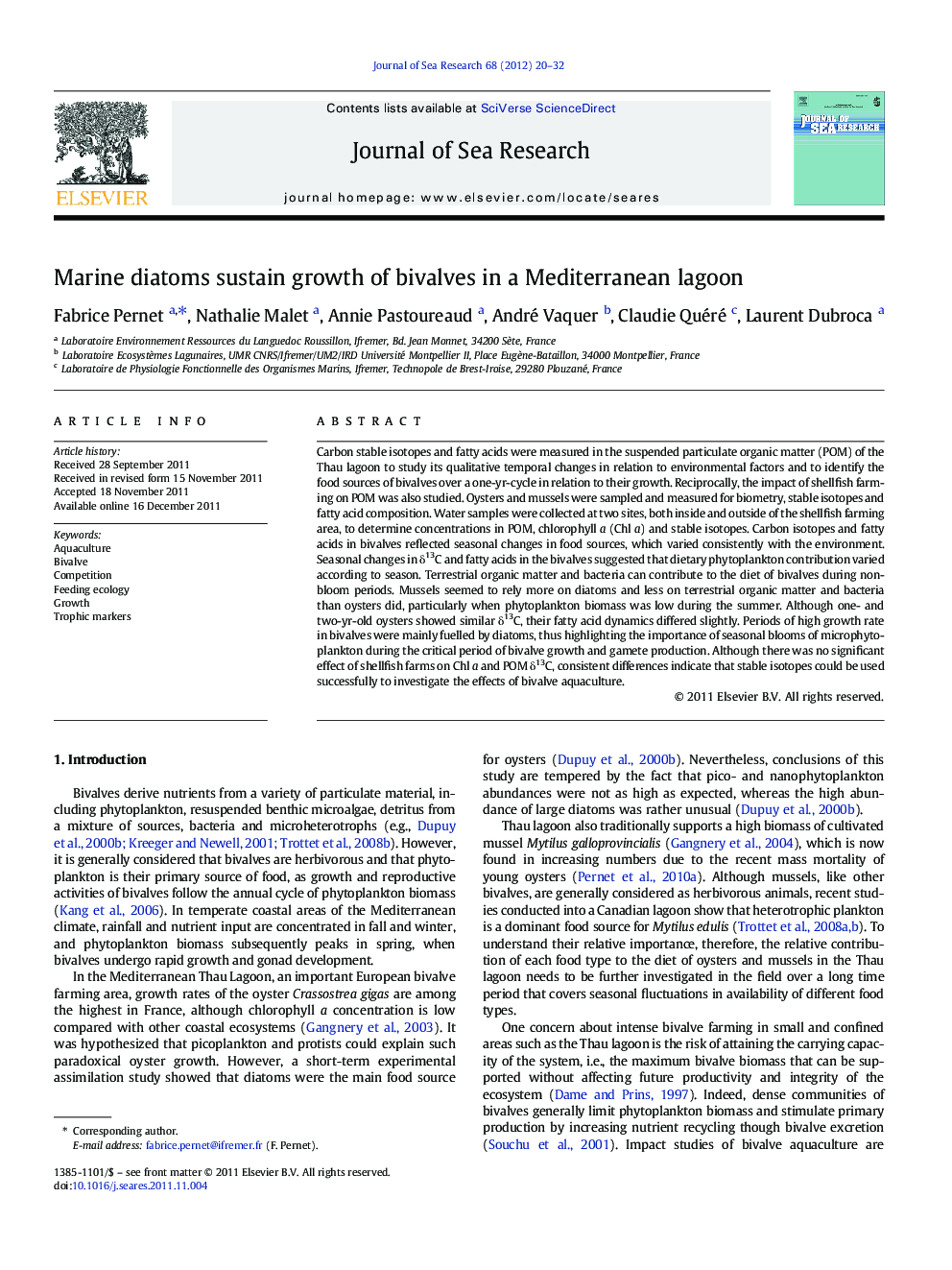| کد مقاله | کد نشریه | سال انتشار | مقاله انگلیسی | نسخه تمام متن |
|---|---|---|---|---|
| 4550074 | 1627506 | 2012 | 13 صفحه PDF | دانلود رایگان |

Carbon stable isotopes and fatty acids were measured in the suspended particulate organic matter (POM) of the Thau lagoon to study its qualitative temporal changes in relation to environmental factors and to identify the food sources of bivalves over a one-yr-cycle in relation to their growth. Reciprocally, the impact of shellfish farming on POM was also studied. Oysters and mussels were sampled and measured for biometry, stable isotopes and fatty acid composition. Water samples were collected at two sites, both inside and outside of the shellfish farming area, to determine concentrations in POM, chlorophyll a (Chl a) and stable isotopes. Carbon isotopes and fatty acids in bivalves reflected seasonal changes in food sources, which varied consistently with the environment. Seasonal changes in δ13C and fatty acids in the bivalves suggested that dietary phytoplankton contribution varied according to season. Terrestrial organic matter and bacteria can contribute to the diet of bivalves during non-bloom periods. Mussels seemed to rely more on diatoms and less on terrestrial organic matter and bacteria than oysters did, particularly when phytoplankton biomass was low during the summer. Although one- and two-yr-old oysters showed similar δ13C, their fatty acid dynamics differed slightly. Periods of high growth rate in bivalves were mainly fuelled by diatoms, thus highlighting the importance of seasonal blooms of microphytoplankton during the critical period of bivalve growth and gamete production. Although there was no significant effect of shellfish farms on Chl a and POM δ13C, consistent differences indicate that stable isotopes could be used successfully to investigate the effects of bivalve aquaculture.
► Carbon isotopes and fatty acids in bivalves reflected seasonal dietary changes.
► Terrestrial organic matter and bacteria can contribute to the diet of bivalves.
► Mussels and oysters showed significant differences in their fatty acids.
► Periods of high growth rate in bivalves were mainly fuelled by diatoms.
► Stable isotopes allow investigating the effects of bivalve aquaculture.
Journal: Journal of Sea Research - Volume 68, February 2012, Pages 20–32